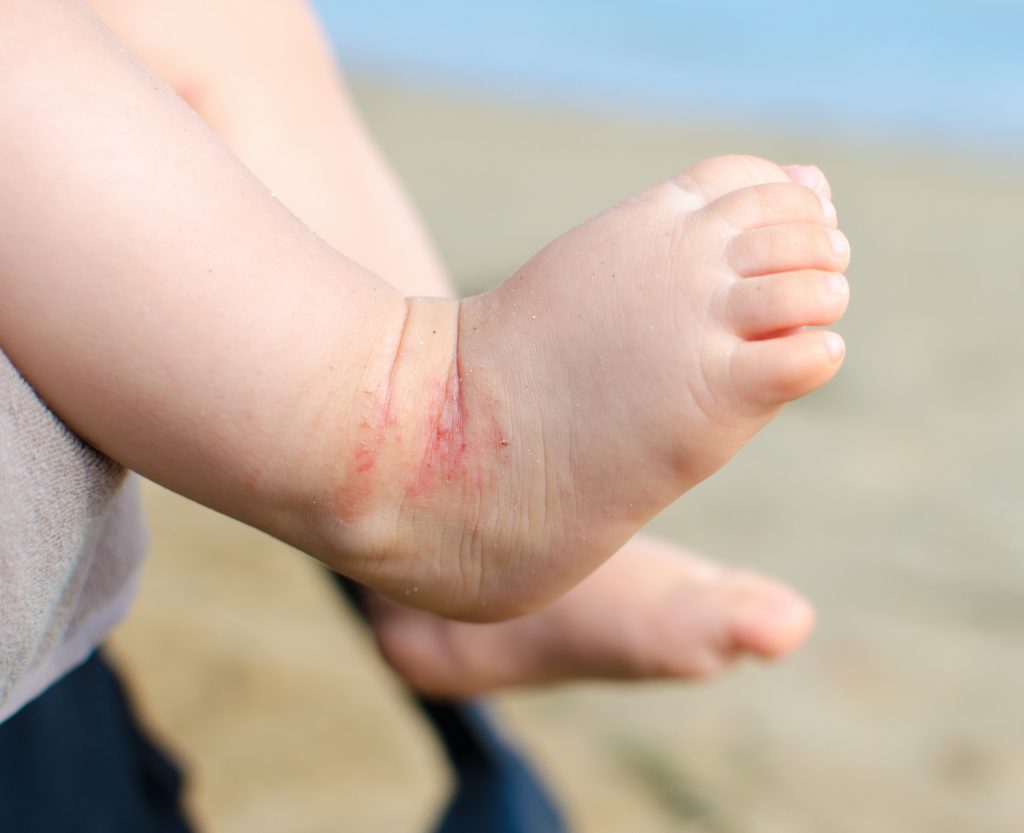- Eczema is a skin condition that causes redness and itching. Symptoms can range from mild to severe.
- There are different types of eczema. The most common is “atopic dermatitis”. Many people with food allergies have atopic dermatitis.
What is eczema?

Eczema is a skin disorder that causes itchiness and rash. The most common type is “atopic dermatitis”. Flare-ups can be triggered by environmental factors, or unknown causes. Severity depends on the individual. Some people may have mild itchiness and a few dry patches. Others, particularly young children, may have eczema covering much of the body.
There is currently no cure for eczema. Therapy is focused on preventing flare-ups, which can be caused by certain soaps, fabrics and skin products, as well as substances such as chlorine. Becoming overheated, or having moisture trapped between clothing and the skin (such as a wet bathing suit) can also be triggers for a flare-up.
How is eczema treated?
Eczema is controlled using a combination of therapies, depending on the severity of symptoms. Avoiding triggers is important (for example, dye-sensitive individuals wash their clothes with dye-free detergent). Moisturizing the skin and controlling itchiness are essential for managing eczema. In severe cases where open sores lead to infection, antibiotics are used to clear the infection.
People with atopic dermatitis often see an allergist to discuss and monitor their eczema management.
Eczema and food allergy
There are many types of eczema and atopic dermatitis (also known as atopic eczema) is the most common. The term “atopy” refers to a hereditary tendency toward eczema, asthma, and allergic rhinitis (hay fever). Many people with food allergies also have atopic eczema.
Sometimes, eczema is the first sign of atopy, followed by food allergy, allergic rhinitis (hay fever), and asthma.
The progression of these allergic diseases is referred to as the “allergic march”. A child with eczema and food allergy may be closely watched for signs of asthma as he or she grows, since the three conditions often (but not always) co-exist.
There is no cure for eczema, but it’s possible to manage the condition by keeping symptoms under control. Young children often outgrow atopic dermatitis, but it can persist or re-emerge in adulthood.
- It can be extremely challenging for parents to manage eczema in a baby or a young child.
- Support groups and services exist in many communities, and your allergist can direct you to these resources.
The rash that itches, or the itch that rashes?
Allergists often talk about the itch-scratch cycle of eczema. A person has an itch and scratches it, creating irritation and rash — which then makes the itch worse. If an itch is scratched to the point of breaking the skin, infection may occur. Controlling the itch and controlling the scratch go hand-in-hand.
To keep an infant or young child with eczema from scratching, parents are advised to keep the child’s nails short. Some children even wear mitts at night to protect their skin from being scratched.

